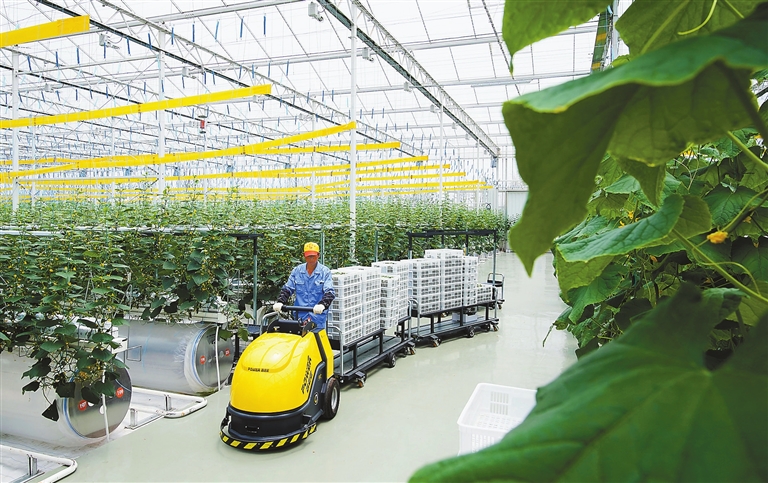
AT Chongming Island just outside Shanghai, workers collect and pack tomatoes and cucumbers at a glass greenhouse operated by Dutch company FoodVentures, which harvested their first batch of produce at the site in May. The facility is one of dozens sprouting up on the outskirts of China’s mega cities that utilize high-technology to manage irrigation, temperature and lighting systems to grow vegetables within easy reach of a large and affluent consumer base. “There is a trend towards more sustainable and professional supply,” said FoodVentures director Dirk Aleven. “We’ve seen a huge acceleration since [the] coronavirus, it is even more important now that fresh produce is produced at the spot where it’s consumed. Before that, they were transported for thousands of kilometers, even within the borders of China.” By far the world’s largest vegetable producer, China has used greenhouses for decades, but food supply disruptions sparked by coronavirus lockdowns in 2020 have accelerated the development of high-tech glass greenhouse facilities. To avoid future disruptions, municipal governments have said they aim to build up reserves of critical staples, and develop distribution and logistics facilities. A growing affluent middle class, willing to pay more for higher-quality food produced with less pesticides, is also fueling the trend, said greenhouse developers. The area used for glass greenhouses grew 28 percent in 2020, well above the 5.9 percent rise seen in 2019, and faster than the 6 percent growth seen last year in areas housing cheaper plastic greenhouses, according to consultancy Richland Sources. Plastic greenhouses help shield crops, but are considered less efficient than glass greenhouses. The latter can churn out high quality produce that is sold directly to retailers, reducing reliance on traditional supply chains. “We see an irreversible trend since the pandemic in consumers buying more of their groceries online, and spending more on healthier choices and agricultural brands they trust,” said Lim Xinyi, executive director of sustainability at Pinduoduo, China’s largest e-commerce platform by users. Historically, China’s vegetable production was concentrated in certain areas and required complex cold chain logistics networks for food to reach major cities’ wholesale markets. The vulnerability of that hub-centric system became apparent in 2020. Xu Dan, CEO of greenhouse operator Beijing HortiPolaris, said his business benefited last year when a second coronavirus wave hit Beijing in June, shutting down a major wholesale market and driving his daily orders up 300 percent. “The pandemic has pushed the fresh food industry to reduce the number of intermediaries in its supply chain network,” said Gayathree Ganesan, an analyst at the Economist Intelligence Unit. Further growth in key cities is likely, with a recent government document showing China aims to more than double its “high-efficiency facility agriculture land” to over 300 hectares by 2025. That growth could further cement China’s status as top vegetable producer. The country already accounts for 75 percent or more of global output of cucumbers, green beans, spinach and asparagus. (SD-Agencies) | 
